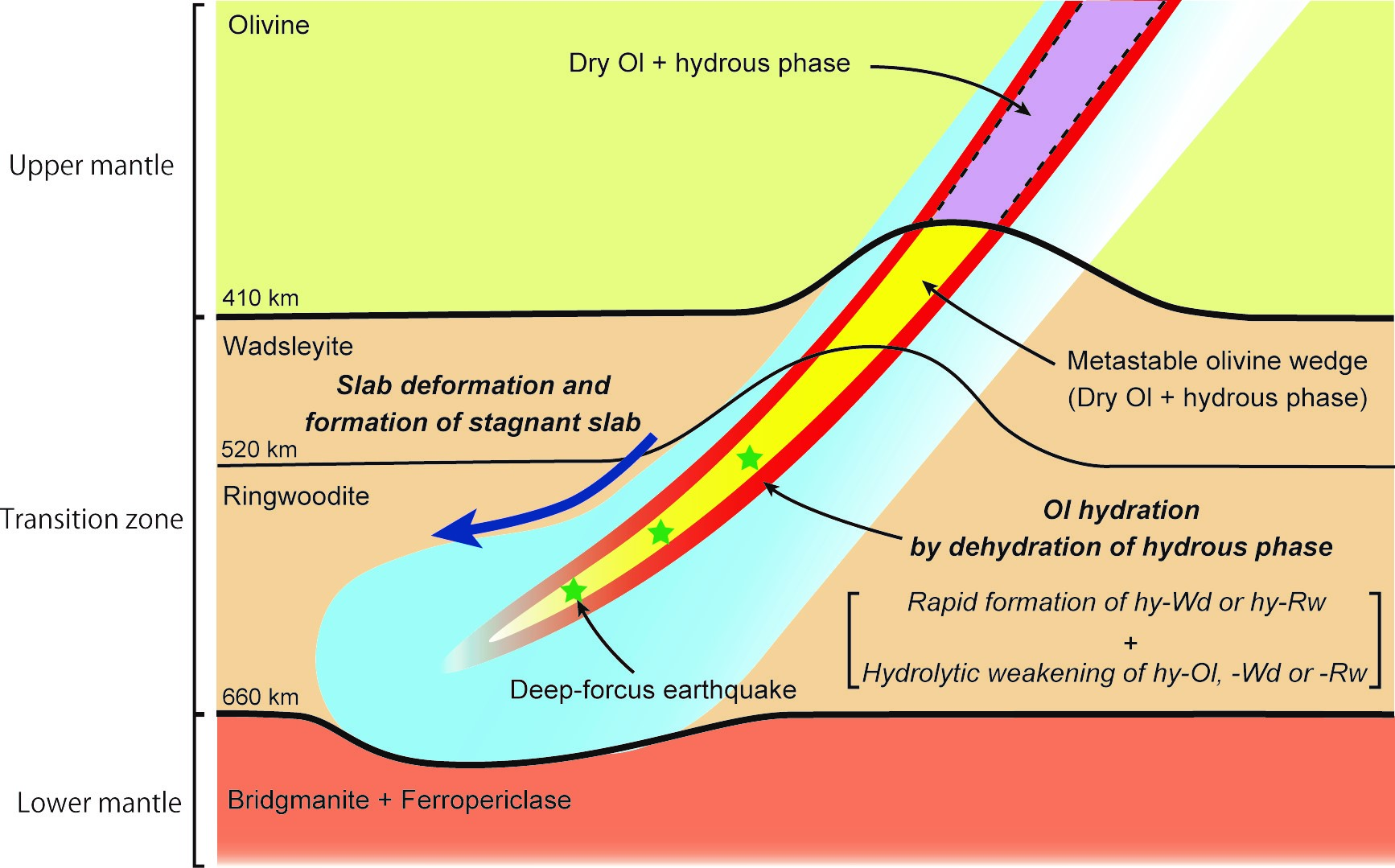
Dry metastable olivine in a wet subducting slab can cause earthquakes and large slab deformation
Takayuki Ishii and Eiji Ohtani
Dry metastable olivine and slab deformation in a wet subducting slab
Nature Geoscience: https://doi.org/10.1038/s41561-021-00756-7
The most widely accepted explanation for deep-focus earthquakes is that they are caused by the delayed transformation kinetics of dry olivine, which would seem to require dry subducting slabs. However, subducting slabs transport water into the Earth’s interior, implying that they are hydrated. The presence of dry metastable olivine in wet subducting slabs therefore seems paradoxical.
Water partitioning experiments between olivine and hydrous phase A, a major dense hydrous magnesium silicate, were performed with a multi-anvil press at BGI under water-undersaturated conditions. Our results show that water strongly partitions into the hydrous phase, such that olivine coexisting with hydrous phase A contains less than 1 ppm water and is therefore kinetically dry.
Our experiments thus solved the paradox: Dry olivine experiences delayed transformation even in hydrated slabs and can cause deep-focus earthquakes. Furthermore, this result suggests that dehydration of hydrous minerals, which is usually considered for the origin of intermediate-deep earthquakes, may also cause deep-focus earthquakes. Our finding also suggests that dehydration of hydrous silicates can cause slab deformation and stagnation in the deep mantle due to the rapid phase transformation of olivine and hydrolytic weakening of olivine and its high-pressure polymorphs.

Figure. Slab deformation and formation of stagnant slab in a wet descending slab and their possible linkage with dehydration of hydrous phases.
Tel: +49-(0) 921 55 3700 / 3766, Fax: +49-(0) 921 55 3769, E-mail: bayerisches.geoinstitut(at)uni-bayreuth.de